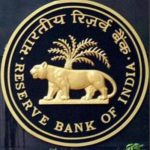New Delhi [India]: India’s trade flows have shown resilience despite global uncertainty and currency volatility, according to a report by SBI Research. During April to September of FY26, India’s total merchandise exports rose by 2.9 per cent to USD 220 billion compared to USD 214 billion in the same period last year.
Exports to the United States also grew by 13 per cent to USD 45 billion from USD 40 billion a year ago, although September saw a year-on-year decline of around 12 per cent, the report said.
While the US remains a major trading partner, its share in India’s overall exports has been falling since July 2025, slipping to 15 per cent in September. Key sectors such as marine products, ready-made cotton garments, and precious stones have seen mixed trends. The share of the US in India’s exports of marine products dropped to 15 per cent in September from 20 per cent in FY25, and in precious stones from 37 per cent to just 6 per cent. However, marine products and cotton garments continued to show positive growth during the April-September period.
At the same time, India’s export destinations have become more diverse. The share of countries such as the UAE, China, Vietnam, Japan, Hong Kong, Bangladesh, Sri Lanka, and Nigeria increased across different product categories. SBI Research notes that this shift could suggest an indirect route for Indian goods, as some of these countries may be re-exporting to the US. For instance, Australia’s share in US imports of precious stones rose from 2 per cent to 9 per cent this year, while Hong Kong’s share increased from 1 per cent to 2 per cent.
Meanwhile, India is navigating the US tariff challenges as the Trump adminstration has levied the highest tariffs on Indian goods among Asian nations, affecting sectors like textiles, jewellery, and seafood, particularly shrimp. In response, the Indian government has approved Rs 45,060 crore in support for exporters, including Rs 20,000 crore in credit guarantees, to enhance competitiveness and facilitate trade diversification.
On the currency front, the rupee came under pressure, breaching 89.49 against the dollar on Friday after holding steady for weeks. The fall was largely due to global market turmoil, as digital assets tumbled and “Sell Japan” trends gathered momentum. The Reserve Bank of India has maintained that it will not defend any particular level of the rupee, and analysts view the recent slide as a short-term adjustment rather than a sign of structural weakness.
India’s current account deficit stood at 0.2 per cent of GDP in the first quarter of FY26, improving from 0.9 per cent a year earlier, driven by strong services exports and remittances. SBI Research expects the deficit to widen modestly in the next two quarters before turning positive by the end of the fiscal year. The report estimates a full-year deficit of around 1.0 to 1.3 per cent of GDP and an overall balance of payments shortfall of up to USD 10 billion, only slightly higher than last year. (ANI)

















